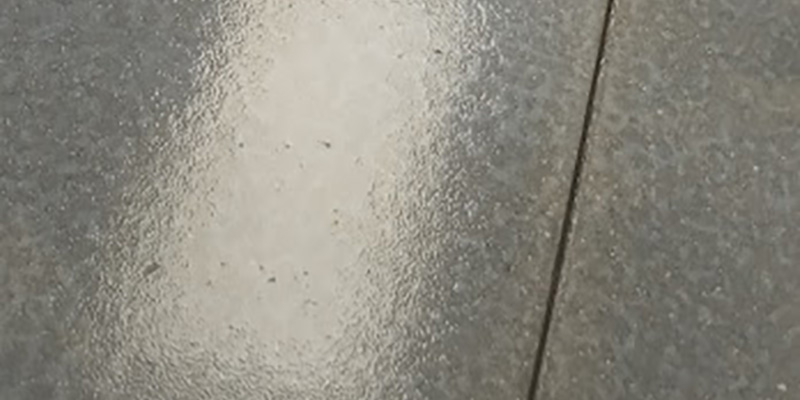
There are numerous options when choosing a flooring for your business or industrial space. Many businesses opt for resin-coated concrete, due to the single seamless surface it can create, but resinous coatings aren’t always the right fit for an application.
Sometimes, basic concrete is called for, or flooring types which are tiled. In these cases, there’s another major consideration when choosing flooring: the joint fillers. If your flooring isn’t naturally seamless, it must have good joint fillers to fill in the cracks.
What Are Joint Fillers?
Joint fillers do exactly what it sounds like: they fill in the gaps in between individual tiles or chunks of concrete in your flooring. They can be made from a wide variety of materials, although for commercial projects, joint fillers are most commonly made from epoxy or polyurethane. These materials give the best lifespan and are most resistant to damage or chemical spills over time. They can remain flexible and resilient for years, making them an excellent value.
Why Are Joint Fillers Used?
There are a few reasons that a tile-based floor with joints would be preferable. Often, this involves situations where the floor would be in danger of being damaged if it were a single monolithic surface.
One scenario where joint fillers could be called for is when the floor is expected to expand and contract throughout its life, such as situations where its operational temperature will change frequently. In these cases, a single chunk of floor, or unbroken resinous coating, would be susceptible to cracking and breaking. A tile-based floor, with high quality joint fillers sealing the gaps, will be able to expand and contract without causing significant damage.
In this situation, the joints are often referred to as ‘control joints’ since they give you more control over the floor’s behavior.
There are also aesthetic considerations. If a flooring is making use of decorative tiles, or similar features, it will need fillers to connect the tiles. In some cases, the filler itself could become part of the overall decorative pattern.
Considerations When Installing Joint Fillers
Typically, joint fillers are installed right alongside the flooring itself – which is by far the best strategy. Doing the joint-filling immediately means there’s no chance of the concrete or tiles shifting in place before the gaps can be filled in.
Occasionally building-owners will try to go cheap and delay installing filler, but this can easily backfire. One accident or unexpected shift to the building, and the floor could become damaged, requiring extremely expensive repairs.
However, one thing which must be factored in is time. Joint fillers are extremely slow to dry and cure, since only their top surface is exposed to air. Because of this, joint fillers typically take weeks to become fully usable, sometimes up to a month. Substantial pre-planning is called for to ensure this doesn’t cause problems.
The time factor is another reason some business-owners put off filling in joints. However, again, this is a very risky idea that could easily lead to more expenses down the line.
Cost vs Quality
When selecting a joint filler, the type of work being done on the floor will determine what type of filler to use. Simply put, the stronger the filler, the more expensive it will be – so you want to match cost to the application.
If your business only sees foot traffic, a lighter and weaker joint filler will be fine. However, if you’re going to have heavy equipment on the floor, your joint fillers will need to be substantially stronger and more resilient to put up with the abuse.
Smart optimization here can lower your overall flooring costs.
Aesthetics In Joint Fillers
As mentioned above, joint fillers can become part of the ‘look’ of your floor. While fillers are typically in very neutral colors, such as white or gray, they don’t have to be utilitarian. Joint fillers are available in virtually any color, since pigment can simply be mixed into the epoxy or plastic. This allows them to match the overall look and feel of any space, or even contribute their own contrasting colors to the floor.
We’ve even heard of multiple colors being mixed-and-matched in a single line of joint filler, although this is difficult, expensive, and probably not worth the effort in most cases.
Black Bear Coatings and Concrete Has the Floors You Need
Black Bear Coatings & Concrete, the industrial flooring experts, has over 30 years of combined expertise engineering and installing flawless urethane and epoxy seamless floor solutions. Our team is the trusted professional in this niche industry. We value-engineer flooring solutions based on the environmental factors that could impact the longevity of your floor. This provides a longer-lasting product. Our pioneering installation techniques that result in industry standard ensures a timely, accurate delivery that minimizes disruption in operations and keeps the focus on your business.
Contact us directly for more information about our epoxy, urethane, polished concrete, and MMA flooring solutions. Request a free, on-site assessment to learn how Black Bear can provide a compliant, visually appealing, and durable floor for your business.



